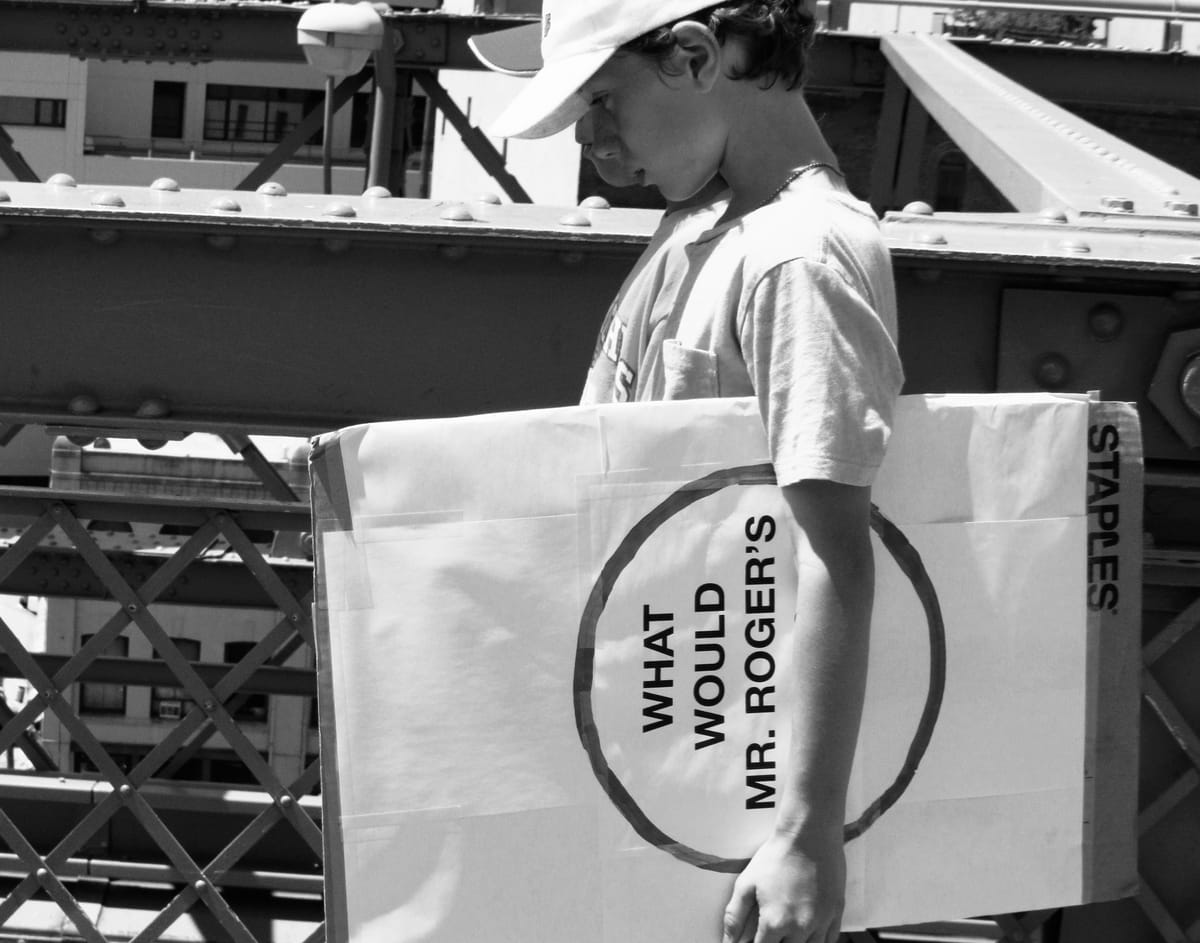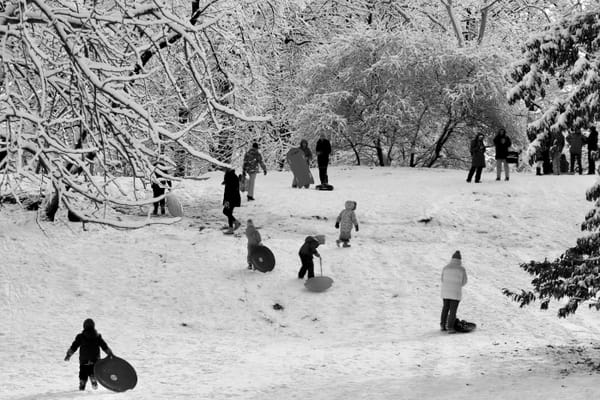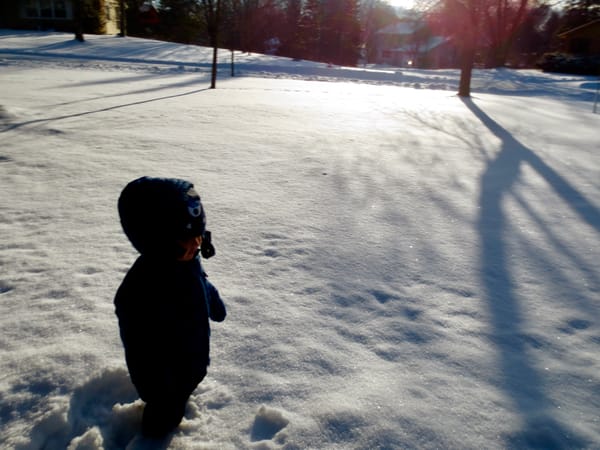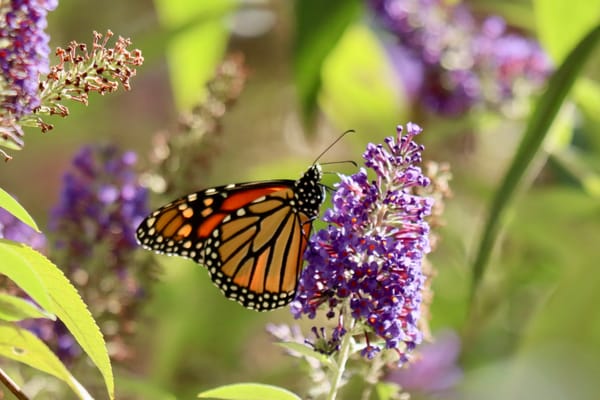Raising Citizens
Rejecting despair in the face of violence

“It is always a matter, my darling,
Of life or death, as I had forgotten. I wish
What I wished you before, but harder.”
~Richard Wilbur
I am putting aside the note I had intended to share today.
In my time leading schools, I’ve put my planned messages aside to write in response to gun violence more times than I can easily tally. Despite the many issues that have left us constantly buzzing with the anxiety of responding to crisis after crisis in recent years, this has been the most persistent.
Each time I feel like I can’t possibly find more words. But we must continue to find new words. We owe our children words that will change the trajectory of our collective narrative by urging hearts and minds in the direction of a better future. Words are not enough. But as Toni Morrison reminds us, they are powerful. She said of language,
“This is precisely the time when artists go to work. There is no time for despair, no place for self-pity, no need for silence, no room for fear. We speak, we write, we do language. That is how civilizations heal.”
Our civilization is in desperate need of healing. We are living in particularly urgent, unstable times, in which we must be constantly mindful of meeting the moment and shaping the future simultaneously. Caring for children and for the world means that we can’t afford to sever our understanding of the present from the future. We are responding to history as it unfolds, and in our responses we are weaving tomorrow. As a parent and as a teacher, this always brings me back to our role as educators, both in the classroom and at home, because every choice we make is not only shaping our children’s future but teaching them how to face it and which values to ground themselves in.
The central purpose of education is to raise citizens. We are often lulled into viewing education through other lenses. We see school as the necessary foundation for our children’s future employment and financial security. We see it as a site for the discovery of interests, passions, and a love of learning. All of these are important byproducts of education. But, fundamentally, education is for citizenship—for providing children with the knowledge and understandings of history, government, and culture that ground informed civic engagement; for offering them rigorous practice participating in the discourse of a self-governed population; and for bringing them into the ongoing process of pushing our messy and imperfect society forward, toward something better, more free, and more inclusive with their voices and their votes.
John Dewey famously wrote, in the midst of WWI, “Democracy has to be born anew every generation, and education is its midwife.” This description hovers on the edge of metaphor, as it so aptly describes the weight of our responsibility, it feels almost literal. As parents and teachers, we have an obligation to hold this moment for our children with the same care and seriousness that we would a birth, because what our children learn from it will define their future. Amidst messy and blood stained times, we can choose to bring our children into citizenship with the same love, care, and hope we summoned to bring them into the world.
Violence always offers us a profound learning moment. When bullets pierce our communities and our news feeds, we can teach our children to meet violence with violence, or we can teach them to meet it with insistence on a future in which, not only their political engagement, but their schools, streets, and houses of worship are the safe, welcoming sites of community and care that they deserve and that mark the functional, free, and inclusive society we have not yet fully realized. We can’t afford to acquiesce to the first option, no matter how enraged or afraid we may be, though even John Dewey struggled with the temptation of force over educating for peace at times.
In order to ensure that we are raising children who are engaged with the world, not defeated by it, and who have the hope and the wherewithal to channel their fear and anger into repair, healing, and progress, we must also remind ourselves to remain committed to these ideals in our own adult actions and conversations.
In these all too frequent moments of fear and discord, I often return to the words of educator Herbert Kohl who wrote,
“We must remember and affirm what we often tell our students: that it is possible to become the people we would like to be, that it is necessary to live with hope, and that it is possible to create a decent life and a decent world.”
Let’s re-commit to those words for ourselves and our children.
Let’s also remember that there were many victims of domestic gun violence this weekend, including children. While political violence is unacceptable, all of the other incidents in my professional life that have led me to need to write notes similar to this one have been in response to shootings in schools, houses of worship, or community spaces. We owe our children our most comforting and empowering words. We also owe them the evidence based solutions, which are at our fingertips if we have the courage to insist upon them.
With hope,
Alicia
Resources
I don’t often use this space to list tips. The world is usually too complex and nuanced for distilled lists to be sufficient, and they can lull us into thinking we’ve done more than we have, because we’ve checked off reassuring boxes. However, the adrenaline of media saturated moments like this can easily lead us away from the thoughtful responses our children deserve. Like routine CPR training, it is sometimes important to be reminded of what we know, so we can say what we want to say to our children and avoid being led by the blur of our own fears.
Talking to Children about Violence
Remind children of all the people who love them and will do everything possible to keep them safe. It is not possible to promise that we can protect them from all harm, and children see through empty assurances, particularly as they experience these events again and again and participate in active shooter training in their schools. But they do take comfort in being reminded of our love and presence. Demonstrations of care and community matter.
Remind children of concrete things they can do to help make the world better. It is scary to feel powerless at any age, but there are always things we can do, even as children. Help them write a letter to a local leader describing the world they want to grow up in. Or do something together to help those in need in your local community. We become less afraid as soon as we become more active. The work of repairing the world can start small, but we always feel better once we start.
Manage age appropriate media exposure. Young children find violent images and the emotional frenzy of the media confusing and frightening. They are not able to understand where or when events have happened, and this makes them feel unsafe. Limit their exposure as much as possible. Older children are likely accessing information themselves, but they still need help discerning reliable sources and processing the information they are seeing and reading in healthy ways. Talk with them calmly and carefully about where they are getting information and how they are understanding it. Don’t leave them alone in their social media feeds. Take their questions and ideas seriously and be a thought partner.
Be mindful of your conversations with other adults. Children hear far more than we think they do. Talk to other adults as if your children are listening to every word, because they probably are. This will not only help create a safe environment for children, it will help you communicate more intentionally and thoughtfully with other adults. We tend to be better versions of ourselves when we remember that our children are paying attention.
Instead of talking about “bad guys” and “monsters,” talk about managing big feelings and making peaceful, restorative choices. This is a tough one. It is tempting to distance ourselves and our children from violence by casting perpetrators as inhuman anomalies. This does us all a disservice, because it allows us to avoid taking responsibility for the circumstances that lead people to do unimaginable things. It is also scary for children to be told that there are “bad guys” or “monsters” in the world, because it confirms the fears that already fuel their imaginations. Instead, talk in age appropriate ways about mental health, about the people and resources in their communities who work to keep them safe, and about the role we can play in improving the systems and laws that make us all safer.
Read books. Especially for young children, it is often easier to process their feelings through the safe distance and soothing messages offered by picture books. Here are a few good ones:
Something, Someday by Amanda Gorman & Christian Robinson
Wemberly Worried by Kevin Henkes
I Will Keep You Safe and Sound by Lori Haskins Houran
Something Might Happen by Helen Lester
Bear Feels Scared by Karma Wilson
Safe, Warm, and Snug by Stephen Swinburne
When Sophie Gets Angry, Really Really Angry by Molly Bang
The Feelings Book by Todd Parr
Love by Matt de la Pena & Loren Long
The Rabbit Listened by Cori Doerrfeld
The Hug by Geraldine Wolters
Additional Resources
Sesame Workshop Resources for Families: Violence
National Association of School Psychologists
Children Hear the Message of the Gun, The Child Mind Institute
Evidence Based Solutions, Everytown for Gun Safety
Raising Gentle Angry People
If you think someone else in your life might appreciate reading Notes on Hope, please share. It’s always easier to hold onto hope when we are not doing it alone.





